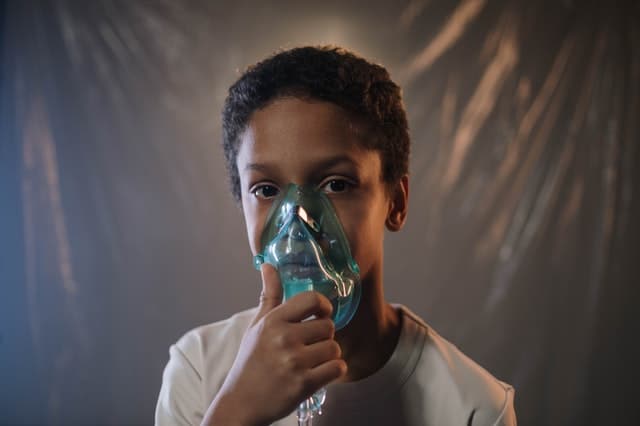What do you have to do if an individual is choking but remains ready to speak or breathe?
What is choking and how is it happen?
This condition arises when there’s insufficient oxygen within the body tissues. There are a variety of causes of hypoxia, starting from suffocation, choking, or poisoning to impaired lung or brain function.
The condition is amid a spread of symptoms, counting on the degree of hypoxia. If not treated quickly, hypoxia is potentially fatal because of a sufficient level of oxygen. is significant for the traditional function of all the body organs and tissues, but especially the brain.
In a healthy person, the quantity of oxygen within the air is quite adequate for the body tissues to function normally. However, in an injured or ill person, a discount in oxygen reaching the tissues leads to deterioration of body function.
Mild hypoxia reduces a casualty’s ability to think clearly, but the body responds to the present by increasing the speed and depth of breathing. However, if the oxygen supply to the brain cells stops for as little as three minutes, the brain cells will begin to die. All the conditions covered during this chapter may result in hypoxia.
Recognition of severe hypoxia.
• Rapid breathing
• Breathing that’s distressed or gasping
• Difficulty speaking
Symptoms: Grey-blue skin cyanosis. At first, this is often more obvious within the extremities, like lips, nailbeds, and earlobes, but because the hypoxia worsens cyanosis affects the remainder of the body.
INJURIES OR CONDITIONS CAUSING LOW BLOOD OXYGEN (HYPOXIA)
INJURY OR CONDITION:
Insufficient oxygen in inspired air: Suffocation by smoke or gas. Changes in air pressure , for instance , at high altitude or during a depressurized aircraft.
Airway obstruction: Blocking or swelling of the airway. Hanging or strangulation. something covering the mouth and nose. Asthma. Choking. Anaphylaxis.
Conditions affecting the chest wall: Crushing, for instance, by a fall of earth or sand or pressure from a crowd. Chest wall injury with multiple rib fractures or constricting burns.
Impaired lung function: Lung injury. Collapsed lung. Lung infections, like pneumonia.
Damage to the brain or nerves that control respiration: A head injury or stroke that damages the breathing center within the brain. Some sorts of poisoning. Paralysis of nerves controlling the muscles of breathing, as in medulla spinalis injury.
Impaired oxygen uptake by the tissues: Carbon monoxide or poisoning. Shock.
CHOKING INFANT (under one year)
An infant is more likely to choke on food or small objects than an adult The infant will rapidly become distressed, and you would like to act quickly to clear any obstruction. If the infant loses consciousness, the throat muscles may relax and therefore the airway may open enough to try to rescue breathing. Be prepared to start rescue breaths and chest compressions.
First aid treatment guide for choking Children’s
1. If the infant is distressed.

If the infant is distressed, is unable to cry, cough, or breathe, lay him face down along your forearm, together with his head low, and support his back and head. hand over to 5 back blows, with the heel of your hand.
2. How to Check the infant’s mouth.

Check the infant’s mouth; remove any obvious obstructions together with your fingertips. don’t sweep the mouth together with your finger as this might push the thing further down the throat.
3. If back blows fail to clear the obstruction.

If back blows fail to clear the obstruction, turn the infant on to his back, and provides chest thrusts. Using two fingers, push inwards and upwards (towards the head) against the infant’s breastbone, one finger below the nipple line.
4. Perform up to 5 chest thrusts. The aim is to alleviate the obstruction with each chest thrust instead of necessarily doing all five. Check the mouth. If the obstruction still has not cleared, repeat steps 1-4 3 times .
5. If the obstruction still has not cleared, call 999/112 for emergency help. Continue until help arrives or the kid loses consciousness.
CHOKING CHILD (one-year to puberty)
Young children especially are susceptible to choking. a toddler may choke on food or may put small objects into her mouth and cause a blockage of the airway.
If a toddler is choking, you would like to act quickly. If she loses consciousness, the throat muscles may relax and therefore the airway may open enough to try to to rescue breathing. Be prepared to start rescue breaths and chest compressions.
- Encourage her to cough; this might clear the obstruction. Remove any obvious obstruction from her mouth.
- If the kid cannot speak, or stops coughing or breathing, perform back blows. Bend her well forward and provides up to 5 blows between her shoulder blades using the heel of your hand. Check r mouth but don’t sweep the mouth together with your finger.
- If the rear blows fail, try abdominal thrusts. Put your arms round the child’s upper abdomen. confirm that she is bending well forwards. Place your fist between the navel and therefore the bottom of her breastbone, and grasp it together with your other hand. Pull sharply inwards and upwards up to 5 times. Stop if the obstruction clears. Stop if the obstruction.
- If the obstruction has not cleared, repeat steps 2 and three up to 3 times. Keep checking the mouth. 5 If the obstruction still has not cleared, call 999/112 for emergency help. Continue until help arrives or the kid loses consciousness.
CHOKING ADULT
A foreign object that’s stuck within the throat may block it and cause muscular spasm. If blockage of the airway is mild, the casualty should be ready to clear it; if it’s severe, she is going to be unable to talk , cough, or breathe, and can eventually lose consciousness. If she loses consciousness, the throat muscles may relax and therefore the airway may open enough to try to to rescue breathing. Be prepared to start rescue breaths and chest compressions.
- If the casualty is breathing, encourage her to continue coughing. Remove any obvious obstruction from the mouth.
- If the casualty cannot speak or stops coughing or breathing, perform back blows. Support her upper body with one hand, and help her to lean well forward. hand over to 5 sharp blows between her shoulder blades with the heel of your hand. Stop if the obstruction clears. Check her mouth.
- If back blows fail to clear the obstruction, try abdominal thrusts. Stand behind the casualty and put both arms around the upper part of her abdomen. confirm that she remains to bend well forwards. Clench your fist and place it between the navel and therefore the bottom of her breastbone. Grasp your fist firmly together with your other hand. Pull sharply inwards and upwards up to 5 times.
- Check her mouth. If the obstruction has not cleared, repeat steps 2 and three up to 3 times, checking the mouth after each step.
- If the obstruction still has not cleared, call 999/112 for emergency help. Continue until help arrives or the casualty loses consciousness.

